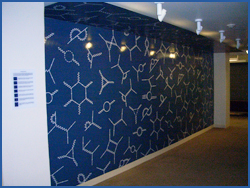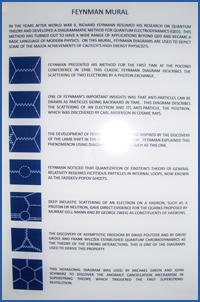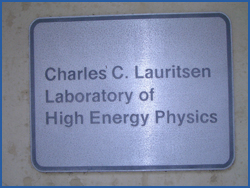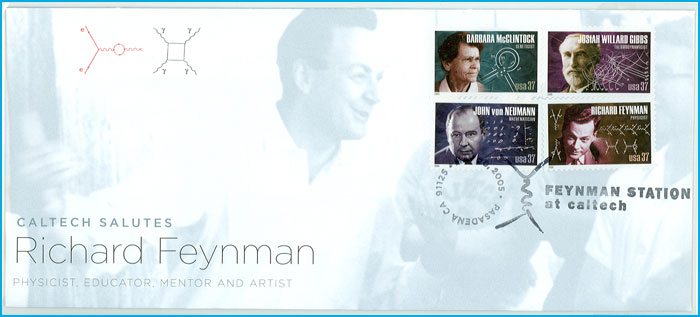- Richard Feynman
used diagrams
to describe how two electrons approch one another, exchange a photon,
and then scatter. (C)
- Carl
Anderson discovered the
positron
- an electron's antiparticle. This was the first empirical proof of the
existence of antimatter. (A)
- Murray Gell-Mann
and grad student George Zweig
independently proposed the existence of quarks. (E)
- John Schwartz discovered
the mechanism depicted by a hexagonal diagram and thus revitalized the
field of
string theory. (D)
- Though
counterintuitive, David Politzer
showed the quarks interactions
weakened with proximity and increased energy, but strengthened with
distance.
(B)
Curves, graphs, diagrams, etc. have long communicated crucial
mathematical information. For example, professors and students in
the physical sciences study the Bohr atom, Lewis structures and
Schrödinger equations. Feynman first introduced his diagrams
at the Pocono Conference in 1948 to describe how two electrons approach
one another, exchange a photon, and then scatter.
Engineering
and Science, vol. LXXV (2), 8-9.
California
Institute of Technology, Summer, 2012
|





